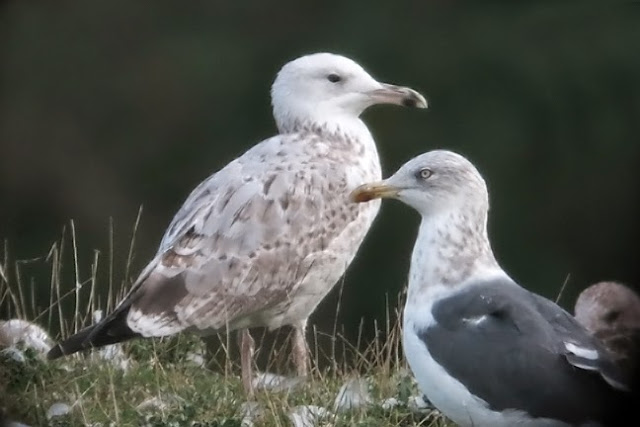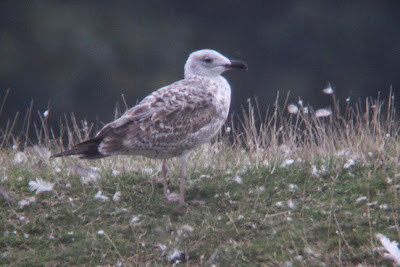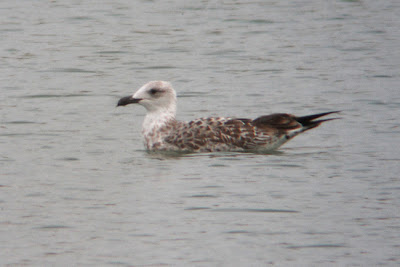As long as the local Buzzards give the gulls long enough to settle they leave the safety of the water and move onto the bank that separates the two lagoons. Just before I was about to leave I spotted this smart bird right on the top of the bank. I was travelling light so I only had my small compact camera and scope. Sadly I get quite a bit of vignetting with this camera and scope combination, but I've managed to crop the image to remove the problem.
Second-winter Caspian Gull
 |
| Second-winter Caspian Gull |




